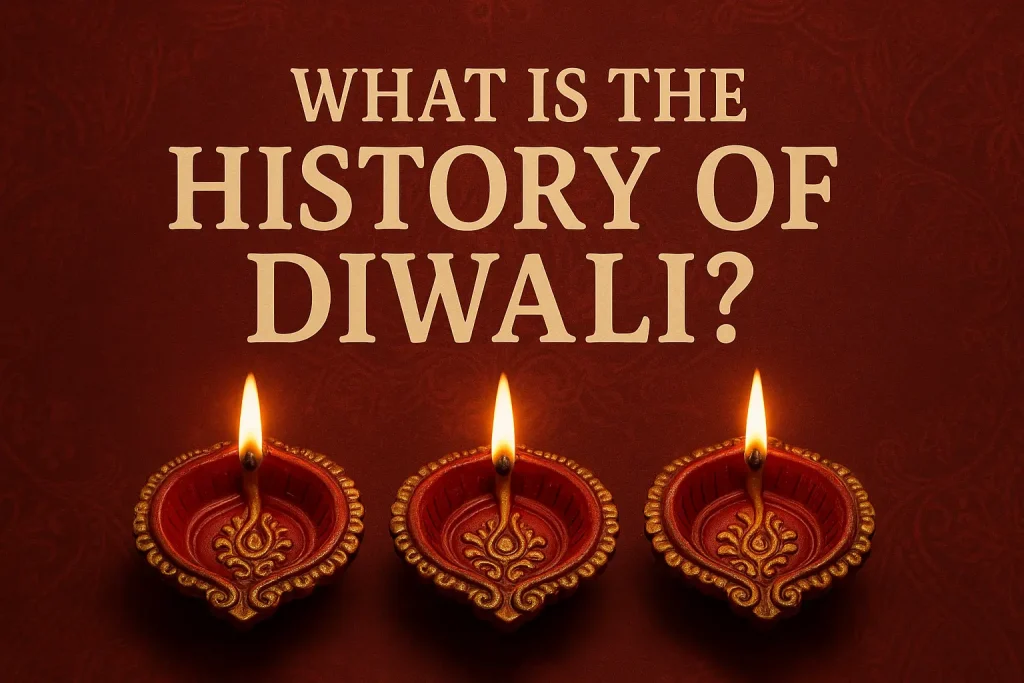Diwali in Ayodhya is highly significant as it celebrates the return of Lord Rama to his birthplace. The festival originates from the Ramayana, which states that the people of Ayodhya lit hundreds of diyas to welcome Lord Rama back from his 14 years of exile. This tradition continued and today, people still light diyas on Diwali to celebrate the victory of good over evil. In Ayodhya, the birthplace of the festival of lights, Diwali takes on a spectacular and grandiose form.
The Significance of Diwali in Ayodhya

The Ayodhya Deepotsav is the highlight of Diwali celebrations in Ayodhya. Diyas are lit on a grand scale every year, and the event has won the Guinness World Record multiple times for the largest display of oil lamps in the world.

Every year, thousands of tourists and devotees from in and out of India travel to Ayodhya to participate in the celebrations. In 2025, the city plans to light over 26 lakh diyas and break its own record from last year.
Places To Visit in Ayodhya During Diwali
1. The Ram Janmabhoomi Temple

During Diwali, the temple complex of the grand Ram Janmabhoomi Temple is decorated with flowers and earthen lamps filled with mustard oil. Special prayers are performed each day as thousands flock to the holy birthplace of Lord Rama.
2. The Hanuman Garhi Temple

Praying at Hanuman Garhi temple before worshipping at Ram Mandir is believed to grant devotees a safe journey, provides protection from evil forces, and make wishes come true.
Visitors must climb 76 steps to reach the temple. During Diwali, the temple is decorated with lights and special aartis are held regularly.
3. The Saryu River Ghats

At the Saryu river ghats in Ayodhya, one can witness the grand lighting of diyas on October 19, 2025, the final day of Deepavali. Over 2 million diyas are lit at Ram ki Paidi ghat, and the river seems to glow with the hopes and wishes of devotees.

At night, the ghats are lit up by millions of diyas. The Saryu Aarti takes place at this sacred scene: priests and devotees offer earnest prayers while the lamps bathe the ghats in a blessed, golden light.
4. The Kanak Bhawan Temple

The Kanak Bhavan Temple is dedicated to Rama and Sita. It is believed to be a wedding gift to Sita from Rama’s stepmother, Kaikeyi. It is a temple known for its beautiful architecture and mythological significance. During Diwali, Kanak Bhavan is adorned with flowers, lamps, and elaborate lighting.
5. The Ram Leela Performances

Ram Leela is a traditional play that shows various stories and episodes from the Ramayana and the life of Lord Rama. In Ayodhya, cultural performances of the Ram Leela are held on a grand scale. Experiencing the events of the Ramayana where they actually took place centuries ago is a unique and divine spiritual experience.
6. The Grand Processions

Processions called Shobha Yatras also grace the streets of Ayodhya during Diwali. These are accompanies by live music and dance. Grand and elaborate tableaux and floats spread throughout the city, which often depict notable scenes and characters from the Ramayana.

Visiting The Ayodhya Deepotsav 2025
Deepavali in Ayodhya is a highly spiritual, tranformative, and life changing experience. It allows devotees to experience the grace and beauty of the holy birthplace of Lord Rama. You may even feel his divine presence in the city.
We understand that not everyone can make the journey to Ayodhya for Diwali celebrations. At Ayodhya Astro, we offer our devotees a chance to be a part of the city’s sacred spiritual atmosphere by participating in its pujas and rituals online. Book a puja today and experience Diwali in Ayodhya!
FAQs
In 2025, Diwali will be celebrated on Tuesday, October 21st.
The dates for Diwali 2025 are:
Dhanteras: Saturday, October 18th
Naraka Chaturdashi ( Choti Diwali): Sunday, October 19th
Lakshmi Puja (Main Diwali): Tuesday, October 21st
Govardhan Puja: Wednesday, October 22nd
Bhai Dooj: Thursday, October 23rd
Yes, Ayodhya is usually crowded on Diwali due to the influx of devotees and tourists into the city.
Where does the Ayodhya Deepotsav take place?
The Ayodhya Deepotsav takes place at the Saryu river ghats.
You are not allowed to carry mobile phones, electronics, cameras, food items, bags or purses, flowers, or footwear inside Ayodhya Ram Mandir. All these items must be deposited in the free locker storage provided to visitors.



